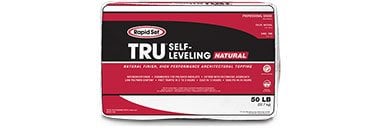- Concrete Polishing Equipment
- Get the Look - Polished Concrete Pictures
- How to Polish Concrete: Learn the basics and get a step-by-step overview
- Polished Concrete Preparation: How to clean, repair, and evaluate before polishing
- Concrete Polishing vs. Resurfacing
- Reviews of Concrete Polishing Equipment How to clean, repair, and evaluate the condition of concrete floors before polishing
- Tips on Using Polishing and Grinding Equipment
- Tips for Choosing Edge Grinders
- Selecting Dust-Collection Equipment
- Diamond Tooling: Tips for choosing the right type of diamond tooling and equipment
- Concrete Densifiers: An introduction to chemical hardeners and how they work to improve polished concrete
- 2023 Polishing Techniques: An online interview series featuring Bob Harris
When & How to Apply Concrete Densifier
Tips for applying concrete hardeners to densify the surfaceWhen is the best time to apply chemical hardeners? Based on my experience, it's best to test and evaluate each substrate first and allow the concrete to tell you when to apply them. All concrete is different, so there's no one-size-fits-all scenario. I actually heard a representative from a chemical supplier claim that, the only time to apply densifier during the polishing process is after stain or dye application has been completed, and after the 200-grit resin-bond diamond has been run. Apparently his logic was that by applying the densifier in this sequence, you help lock in the color. This is true to a certain extent, but not on soft concrete.
On soft to medium concrete, and depending on the desired finish (salt and pepper, aggregate exposure) we have had great success densifying after the 80-grit diamond and then moving on to the next sequence of grits. On medium-hard to hard concrete, we typically densify around the 200- to 400-grit range. It's good routine to test every surface using a Mohs hardness pick (which measures the level of mineral hardness based on the Mohs scale) to assess if the concrete is soft, medium or hard. This is a quick but effective way of determining what your next step will be.
Although we usually apply densifier after grinding with the 80-grit metal-bond diamond, we have also had good success applying densifier after the color has been applied, around 400 grit. When it comes time to applying densifier to concrete that will be acid stained or dyed, the timing differs. With acid stain, it's best to apply densifier after the acid stain has been applied, rinsed off, and neutralized because the densifier creates a more impermeable substrate that could inhibit the penetration and reaction of the stain. Dyes, on the other hand, can be applied after you have densified because they are 100% soluble and penetrate readily. In addition, dyes do not rely on a chemical reaction like acid stains do.
To successfully apply densifier, one of the most important considerations is to have an understanding of the concrete you are about to apply it to. The main types of chemical hardeners consist of sodium, potassium, and lithium silicates as well as a newer generation of nano-technology and colloidal silicates. For the most part, a silicate is a silicate and it's the carrier of the silicate (lithium, potassium, sodium) that delivers the densifier, allowing it to do what it is supposed to, which is to react with the concrete.
The chemistry of how densifiers work is complex, but in general terms, silicates react with the leftover calcium hydroxide in the concrete, which is a byproduct of the hydration process. This addition of silicate to the pore structure and capillaries of the concrete produces a harder, more impermeable substrate and a surface that is much less prone to dusting. Consult with your chemical supplier, and consider formal training in the application of their products.
Here is what polished concrete pros Chris Swanson and Robert Chaney have to say about the process of applying densifiers:
Do you densify at different stages of your grinding/polishing and, if so, why?
Chaney: Absolutely. It changes with every job. In a perfect world, after 200 grit. There are several factors when deciding at what stage densifier should be applied during a polish process. What age is the concrete? Did it lose its air entrainment when it got rained on during placement? Is it so soft that your diamond costs justify getting it harder prior to putting a machine on it? Are there multiple colors in the floor? What part of the world are you a polishing contractor in? Guys in Florida will have a different answer than a contractor on the West Coast, which is known for having some the hardest natural aggregates in the world. Are you in a city where manmade sand is prevalent in the ready mix? Ultimately it comes down to hardness for me. I need to comfortably incorporate the densifier into a job to achieve its maximum performance is how I attack any slab.
Swanson: Typically we densify after the 80-grit step. It penetrates the surface very well and if there is ever any excess on top, it gets cut off in the next step. We also apply a very, very light application after color. Don't know if it really helps or not, but it makes us feel a little better about locking in the dye color. Based on our company's past successful projects, this application scenario seems to work great.
Do you apply more than one coat of densifier and, if so, why?
Chaney: Sometimes. I try not to. Densifier is a game breaker. If it goes down wrong and you're on a high-end decorative piece, you're having a bad day tomorrow. There are some maintenance systems where we specify the hardeners from Substrate Technology, as they have the additive you just put in the water reservoir of the auto scrubber. But it's not the heavy concentrate that we use during install applications.
Swanson:Like I mentioned earlier, we apply our first application after the 80 grit and then apply one more light application after the color has been applied, after the 400 grit. Our logic is that the second mist coat helps lock the color in.
 Concrete Densifier
LIQUI-HARD ULTRA concrete densifier comes in 5-55 gallon containers
Concrete Densifier
LIQUI-HARD ULTRA concrete densifier comes in 5-55 gallon containers
 Ameripolish 3D HS 1 GAL
Three different sized molecule silicates
Ameripolish 3D HS 1 GAL
Three different sized molecule silicates
 Lithium Silicate Densifier
Polishing aid for burnished or polished concrete surfaces
Lithium Silicate Densifier
Polishing aid for burnished or polished concrete surfaces
 Lythic Densifier XL
1 Gallon & 5 Gallon sizes
Lythic Densifier XL
1 Gallon & 5 Gallon sizes
 Self-Leveling Polishable
Self-Leveling Polishable Overlay Long working time, smooth surface, polishable topping





